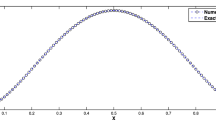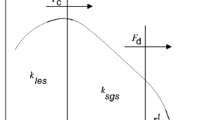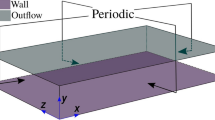Abstract
The objective of the present study is to formulate flame front evolution models capturing the effects of flame extinction, ignition, and oscillations in addition to the conventional regime of flame propagation. The basic equations constituting the one-dimensional thermodiffusion model of combustion are reduced to a system of two ordinary differential equations for the flame front coordinate and flame temperature. These equations admit solutions that describe, for example, ignition, extinction, and nonlinear oscillations of the flame, which are observed during premixed gas combustion in microchannels with an elevated wall temperature or during gasless combustion of condensed systems. Similarity of the basic thermodiffusion models assuming an in-finitely small thickness of the chemical reaction zone allows application of a universal method to derive reduced equations in physically different systems. It is demonstrated that modeling of flame oscillations requires at least considering effects associated with flame acceleration (flame front “inertia”) and the rate of flame temperature variation. The accuracy of the proposed model with inertial effects is checked by results of direct numerical simulations of the original equations.
Similar content being viewed by others
References
K. N. C. Bray, “Turbulent flows with premixed reactants,” in: P. A. Libby and F. A. Williams (eds.), Turbulent Reacting Flows, Springer-Verlag, New York (1980). [Topics in Applied Physics, Vol. 44 (1980), pp. 115–183.]
A. C. Fernandez-Pello, “Micropower generation using combustion: issues and approaches,” Proc. Combust. Inst., 29, 883–899 (2002).
J. Vican, B. F. Gajdeczko, F. M. Dryer, et al., “Development of a microreactor as a thermal source for microelectromechanical systems power generation,” ibid., pp. 909–916.
J. Ahn, C. Eastwood, L. Sitzki, and P. D. Ronney, “Gasphase and catalytic combustion in heat-recirculating burners,” Proc. Combust. Inst., 30, 2463–2472 (2005).
N. I. Kim, S. Kato, T. Kataoka, et al., “Flame stabilization and emission of small swiss-roll combustors as heaters,” Combust. Flame, 141, No. 3, 229–240 (2005).
K. Maruta, T. Kataoka, Nam Il Kim, S. Minaev, and R. Fursenko, “Characteristics of combustion in a narrow channel with a temperature gradient,” Proc. Combust. Inst., 30, 2429–2436 (2005).
M. L. Frankel and V. Roytburd, “Finite-dimensional model of thermal instability,” Appl. Math. Lett., 8, No. 2, 479–496 (1995).
A. G. Merzhanov, A. K. Filonenko, and I. P. Borovinskaya, “New phenomena in combustion of condensed systems,” Proc. Acad. Sci. USSR, Phys. Chem. Sec., 208, 122–125 (1973).
A. G. Merzhanov and A. S. Mukasyan, Solid-State Combustion [in Russian], Torus Press, Moscow (2007).
I. Brailovsky, M. Frankel, and G. I. Sivashinsky, “Galloping and spinning modes of subsonic detonation,” Combust. Theory Model., 4, 47–60 (2000).
S. Minaev, K. Maruta, and R. Fursenko, “Nonlinear dynamics of flame in a narrow channel with a temperature gradient,” Combust. Theory Model., 11, 187–200 (2007).
S. Minaev, R. Fursenko, N. T. Bakirova, S. Kumar, and K. Maruta, “Modeling of traveling structures in radial microchannels with a wall temperature gradient,” in: Proc. of the 6th Asia-Pacific Conference on Combustion (ASPACC 07) (2000), pp. 546–549.
Y. B. Zel’dovich and G. I. Barenblatt, “Theory of flame propagation,” Combust. Flame, 3, 61–74 (1959).
G. A. Fateev, O. S. Rabinovich, and M. A. Silenkov, “Oscillatory combustion of a gas mixture blown through a porous medium or a narrow tube,” Proc. Combust. Inst., 27, 3147–3153 (1998).
T. L. Jackson, J. Buckmaster, Z. Lu, D. C. Kyritsis, and L. Massa, “Flames in narrow circular tubes,” Proc. Combust. Inst., 31, 955–962 (2007).
G. Pizza et al., “Dynamics of premixed hydrogen/air flames in microchannels,” Combust. Flame, 155, 2–20 (2008).
Author information
Authors and Affiliations
Corresponding author
Additional information
__________
Translated from Fizika Goreniya i Vzryva, Vol. 47, No. 4, pp. 24–33, July–August, 2011.
Rights and permissions
About this article
Cite this article
Minaev, S.S., Fursenko, R.V. Inertial effects in nonstationary models of flame front evolution. Combust Explos Shock Waves 47, 394–402 (2011). https://doi.org/10.1134/S0010508211040022
Received:
Published:
Issue Date:
DOI: https://doi.org/10.1134/S0010508211040022




